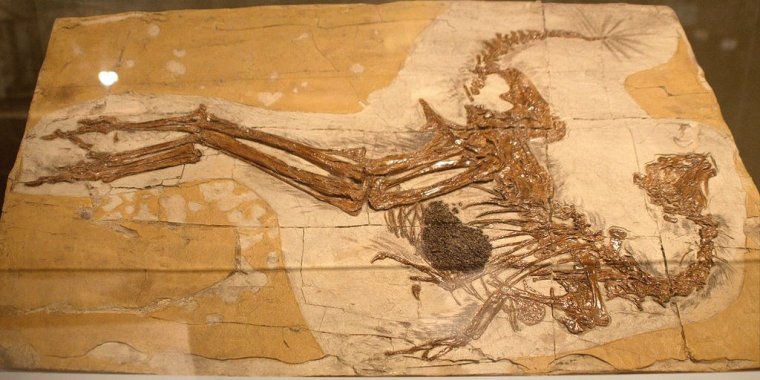| News / Science News |
Scientific study suggests dinosaurs flapped their wings as they ran
Scientists from China's Tshinghua University and the Chinese Academy of Sciences reported bird flight may have evolved from wing-flapping by running dinosaurs. These findings support the hypothesis flight could have evolved up from the ground, in contrast to models in which active flapping flight evolved after gliding, a passive form of flight.
The authors proposed that, in Caudipteryx, from a mechanical perspective, two-legged running automatically induced wing flapping. The authors of the report used a mathematical model, a robot, and young ostriches to test their hypotheses.
For the study, the researchers chose Caudipteryx zoui, a dinosaur about the size of a peacock known to have feathered wings but not flight. It weighed about 10 lbs (5 kg) and the researchers estimate it had a top speed of about 18 mph (8 m/s).
Using modal effective mass theory, the team conceptualized the dinosaur's body as a series of springs and other components, first as a computer model and then as a physical robot. In both scenarios, running at medium speed produced vibrations making the animal's wings flap.
This work shows that the motion of flapping feathered wings was developed passively and naturally as the dinosaur ran on the ground. Although this flapping motion could not lift the dinosaur into the air at that time, the motion of flapping wings may have developed earlier than gliding.
They also attached sets of artificial wings to juvenile ostriches about the same size as Caudipteryx. They found the faster each ostrich ran, the more it tended to flap, with larger wings providing more lift.
Although Caudipteryx is in the same evolutionary group as birds and other theropods, it lived millions of years after flying dinosaurs, such as Archaeopteryx, were already in the air.
While current consensus among scientists says birds as we understand them evolved from theropod dinosaurs, there are several competing ideas about how exactly flight developed in these vertebrates.
Some scientists believe the first fliers were tree-dwelling dinosaurs who could parachute and glide before they could fly, while some say flight grew up from the ground, from runners. (Wikinews)
YOU MAY ALSO LIKE




